Exploring the World of Monsters and Demons in Buddhism; Scary Fun with Our Darker Natures
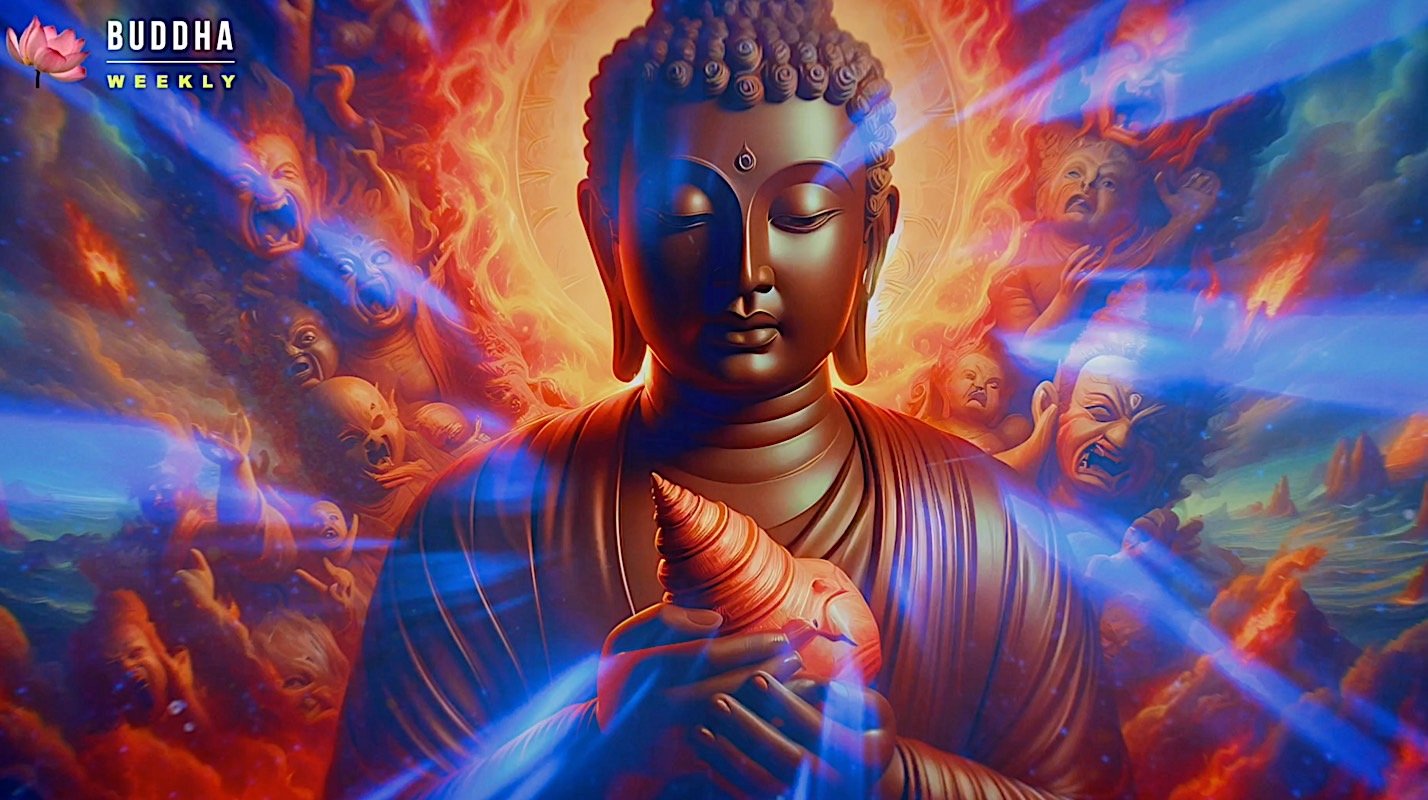
Let’s face it — the movie-monsters of Hollywood are the cry-babies of the supernatural world. Werewolves? Phooey — try a giant Oni demon on for size. Vampires — well, okay, Buddhism has those too, except they are also black magicians. Ghosts? You won’t want to meet a Jikininki — he’ll eat your heart out! Sasquatch? Isn’t he a good guy? Anyway, in the Himalayan beliefs, they have the Yeti — you won’t want to cross snowy paths. Windigos? Okay, they’re nasty cannibals, but in Buddhist myth, there’s an entire race of cannibals, the Rakshasas, who munch on both humans and gods. Goblins? They’re nothing next to the The’u Rang, goblins who create thunderstorms.
For a “who’s who of demons and monsters in Buddhism, see detailed sections below! Have scary fun!
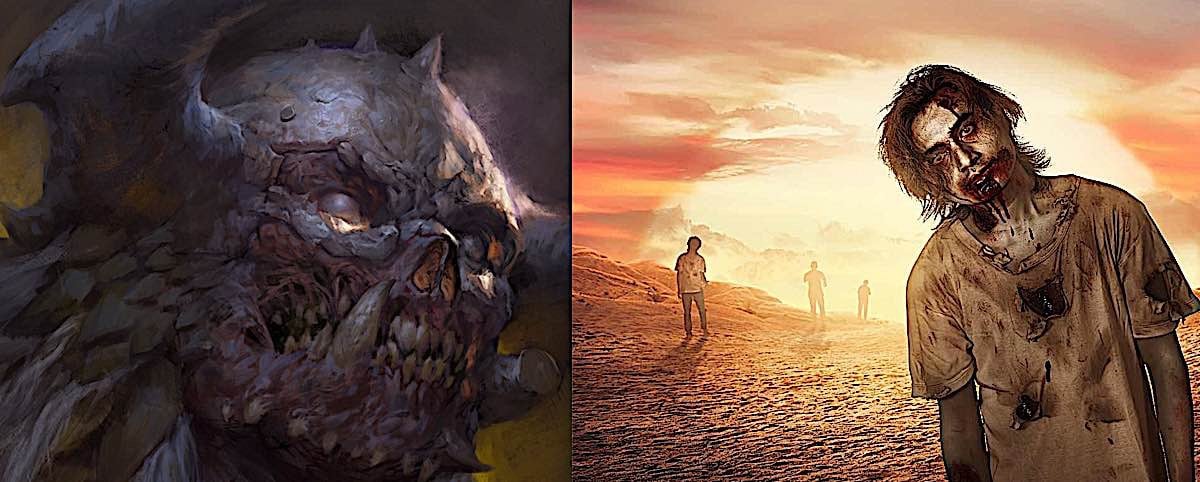
In modern Buddhist thought, demons and monsters — up to an including Mara, who is “tempter” (similar to Satan) — manifest from our darker natures, not necessarily as supernatural creatures. In this way of thinking, Buddha did fight Mara under the Bodhi tree — but it was in his meditations — in his thoughts — a battle against his temptations and cravings. In the same way, many Buddhist practices focus on our own “battle” against similar delusions. On the other hand, many demons in Buddhist legend are said to manifest as the darker sides of nature.

Come along with us now as we explore the monsters and demons of Buddhism. Don’t be afraid! Arm yourself with a mantra or two — Om Mani Padme Hum or Om Tare Tuttare Ture Soha — and join us in the dark where the supernatural spirits rise to scare us. (And, before you try to exorcise those demons, remember, all creatures have Buddha Nature!)
Conventional view: armies of demons and monsters
Millions of Buddhists take the conventional view — that armies of Mara’s demons did rise to battle Buddha under the tree, not symbolically, but in a real struggle. Is there a difference? In essence, no. A battle with demons — whether internal or manifested externally — amounts to the same thing, ultimately. A mental beast is arguably more dangerous than a movie-monster devil.
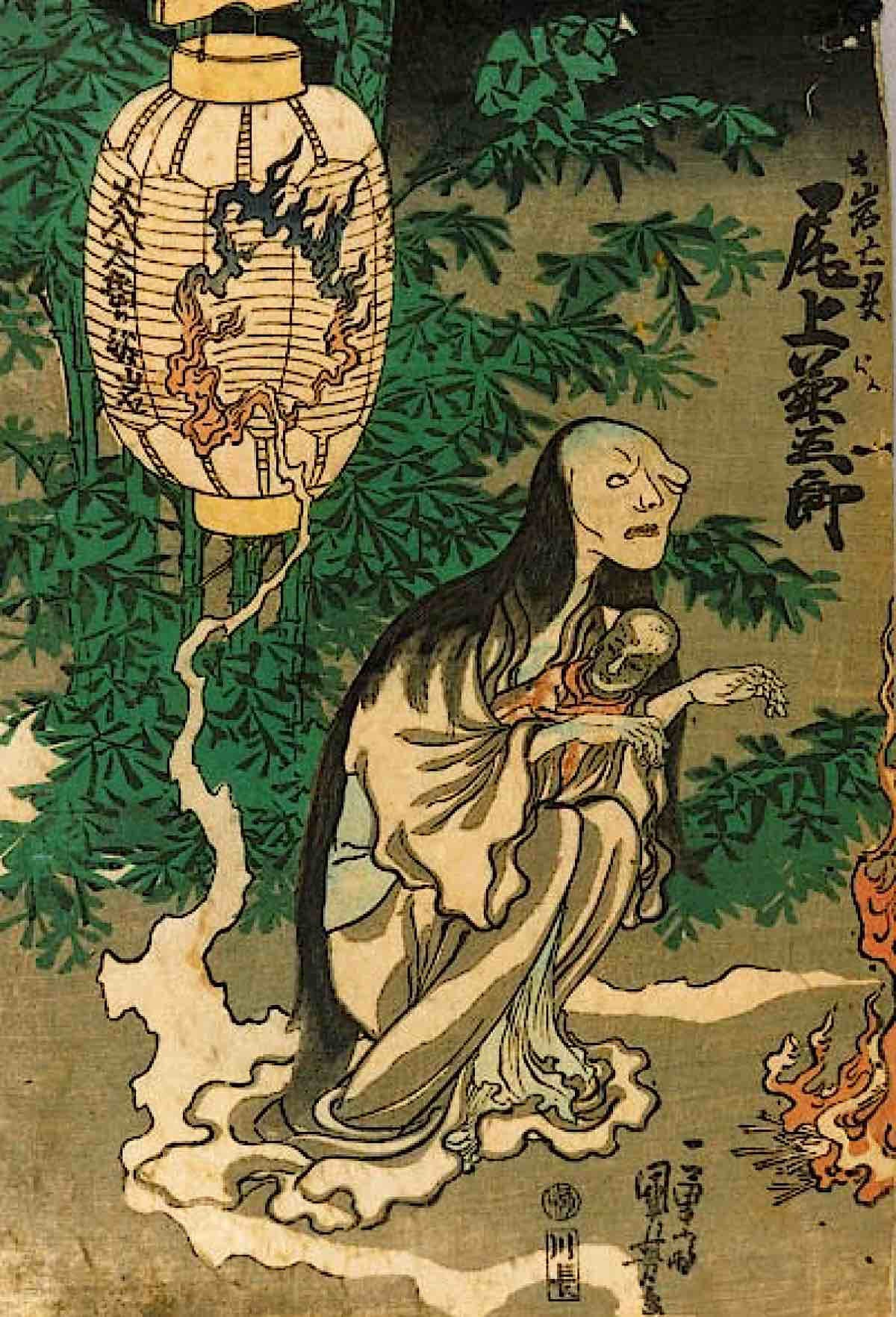
There is room for both views, since in Buddhism, the doctrine of Shunyata and Dependent Arising make it clear that all phenomena are ultimately empty of inherent existence — not just demons, but we, our selves. You could argue, demons manifest out of our egos — either as dreams and nightmares, or real monsters empowered by our fears and cravings.

In a teaching on Chod, H.E. Zasep Rinpoche explained,
“You might have the eerie sense there are some spirits or ghosts or demons. But, most of the time, these are your own projections… You have to experience whatever the demon is, your own demon, so you can recognize your fear and delusions.”
Chod is a practice not only helps us face our demons — but we actually feed them in the spirit (pun intended) of “compassion for all beings.” Rinpoche explains this is why we practice “charnel grounds, wilderness, forests, in nature, near rivers and lakes.” For a video feature on Chod, see>>
Before we pooh-pooh zombies…

Although we might pooh-pooh the zombies, hungry ghosts, and wicked demons as “psychological constructs,” let’s celebrate the “spooky” season of Halloween by considering that in our conventional dualistic “reality” there is room for the supernatural.
Demons and monsters in Buddhism serve a similar function in practice to other spiritual paths. They are manifestations of our fears, weaknesses, failings, craving and our own evil karma. Or, the manifestations of the same thing in nature and the universe. And, in the case of “pretas” or hungry ghosts, they have their own realm — one of the six realms into which we can be reborn — so watch out! (You should be okay if you’re not greedy and clingy!) Likewise, “hell-beings” or demons have their own realm, but typical of these homeless beasties, they often seek out our world to wreak havoc.
Appearances can be deceiving
Sometimes the bad guys are the good guys. Great masters such as Padmasambhava converted many demons to the Dharma and swore them to the service of Dharma practitioners. Other beings appear demonic but are actually Bodhisattvas. For example, Yamantaka is one of the most powerful and ferocious of Protectors — an Enlightened form of Manjushri — but he takes on an appearance which is so fearful that even Yama, the Lord of Death, is frightened. Wrathful Buddhist Deities are the good guys. How can you tell? Usually, they look more ferocious than the “bad guys,” but you’ll notice they have symbols of Enlightened deities, such as a throne on a lotus, a vajra in hand or other symbols.
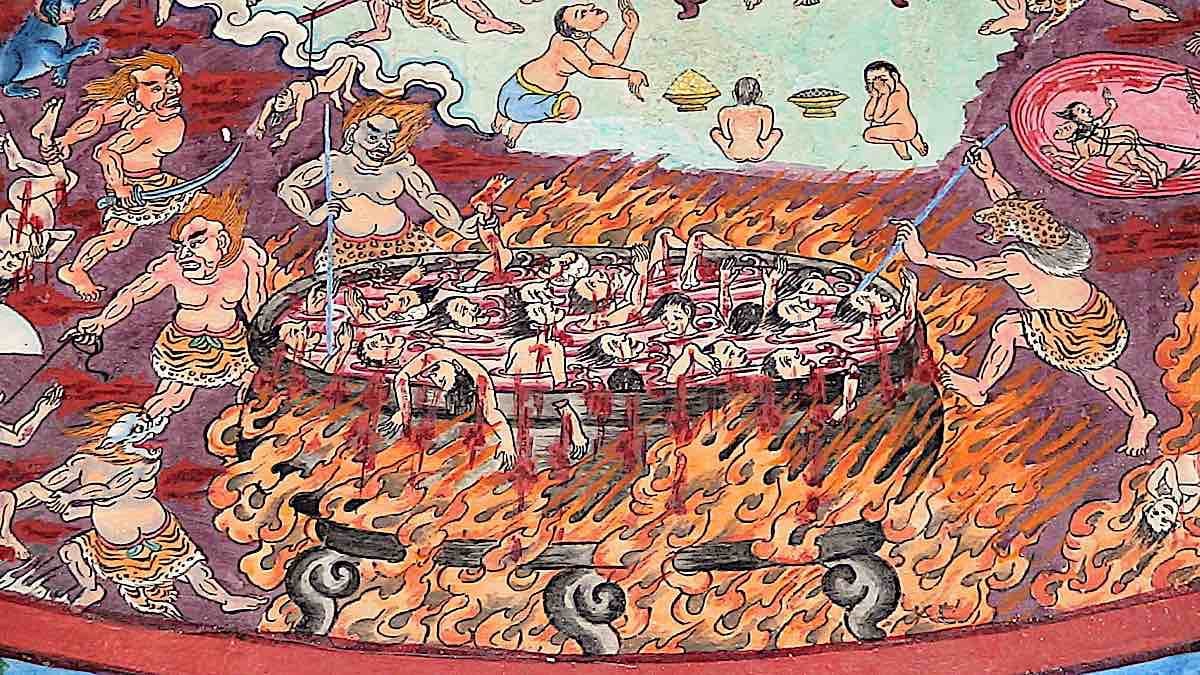
In Buddhism, appearances are deceiving. Mara, the great tempter that makes Satan look a “nice guy,” can actually tempt us with beauty — as he did when he sent his beautiful daughters to tempt Buddha under the Bodhi tree. A nasty appearance does not equate with “evil” any more than beauty signifies “good.”
(When in doubt, you could always say a mantra. An evil being would recoil, and you may actually help them!)

The karma of monsters and hungry ghosts
You could think of Pretas as hungry ghosts — insane ghosts who mad because they are always hungry. Or, you could believe they manifest out of our own greedy karma. In this tradition, our greed in this lifetime, at the expense of others, leads to our a ghostly life of madness and endless hunger after death. These frightening “hungry ghosts” or pretas grew out of our own insecurity with our greed. In this way, they are “real.” (Remember, it’s Halloween, let’s give monsters a chance!)
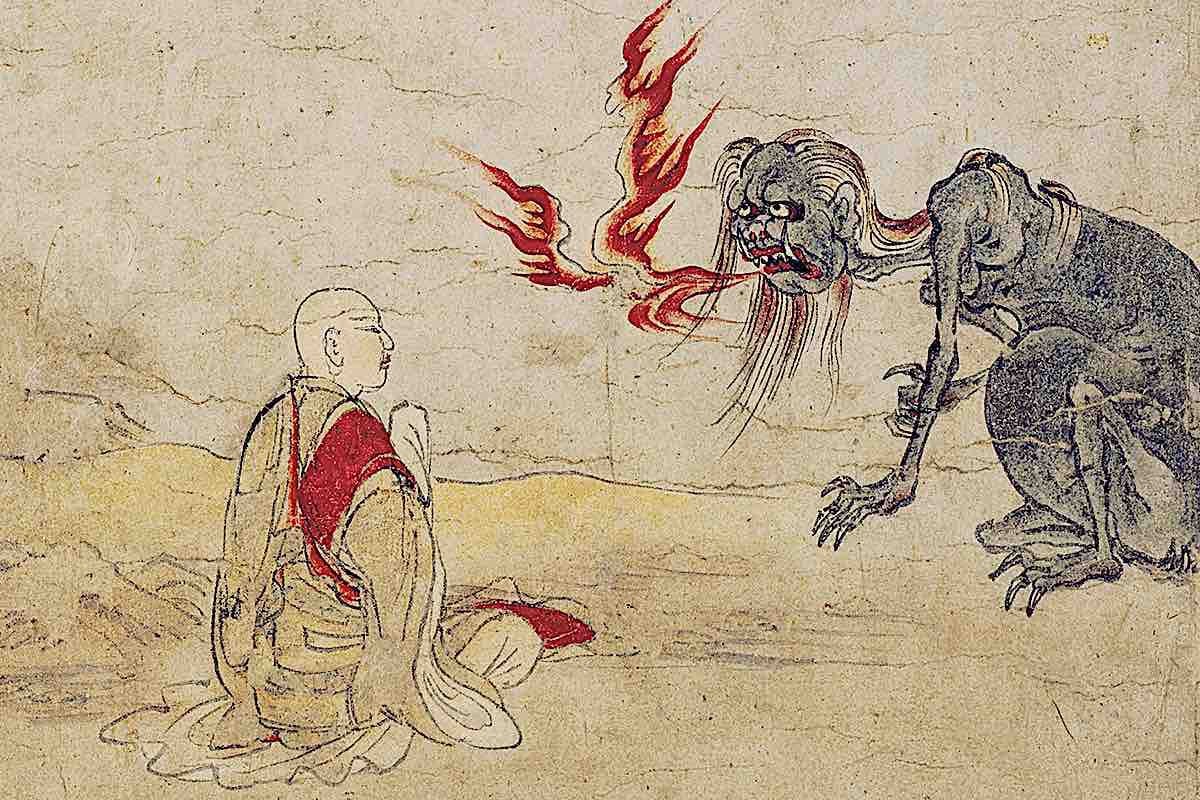
Putting aside the argument of substantiality, there are millions of people around the world who believe in — and fear — such creatures. We thought we’d have a little spooky fun with the Buddhist array of monsters. There are countless forms of supernatural monsters, ghosts and demons in Buddhist legends — but for now, we’ll focus on just the scariest and most “popular.”
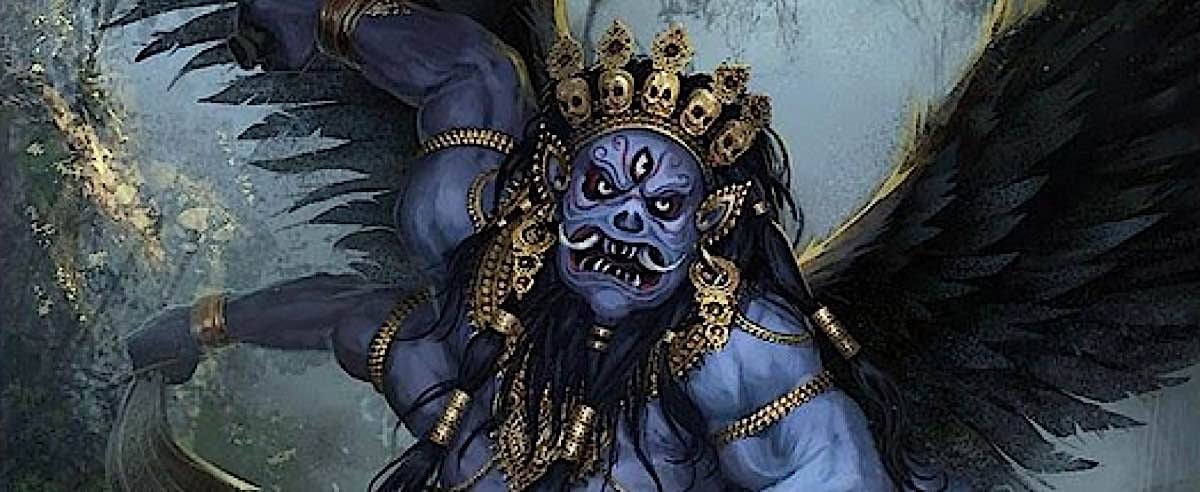
Multicultural monsters — zombies, ghosts, vampires, they’re everywhere!
Some “classes” of monsters are virtually universal across cultures. From Europe to Asia and India, zombies, vampires and ghosts abound. Were-beasts, including Werewolves, are fairly common myths. Cannibals are probably the biggest scare. Vampires cross all cultural boundaries.
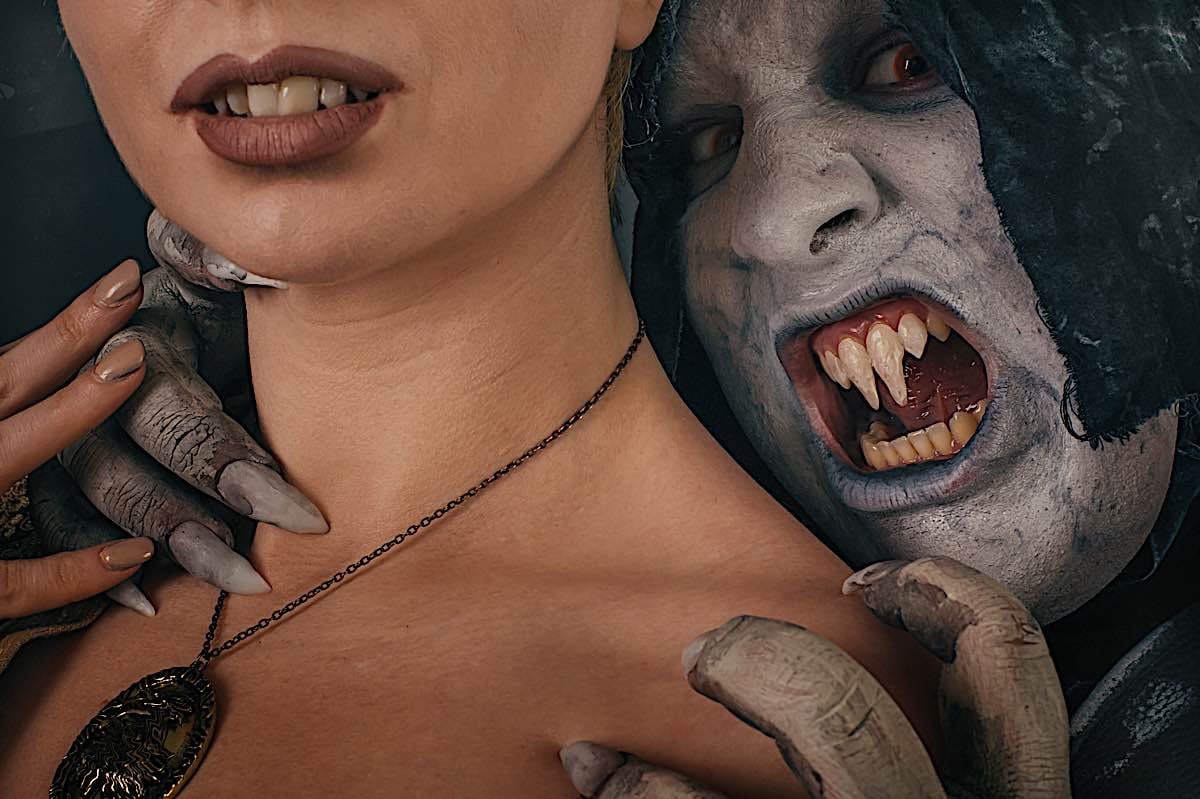
What does this tell us? There is an over population of zombies? Or, maybe, we all fear the same things? Flesh-eating and blood-drinking are certainly near-universal fears when it comes to supernatural manifestations.
Supernatural adversary?
The idea of an “adversary” is also nearly universal — whether called Mara or Satan — he has crept into the “Collective Consciousness” of all peoples — as described by Psychiatrist Carl Jung.
Interestingly, remedies for supernatural threats are somewhat universal as well, such as exorcism, found around the world, with its roots in shamanism. Likewise, salt and cold iron (or meteoric iron,) for example, are known around the world as protective against “evil spirits.”

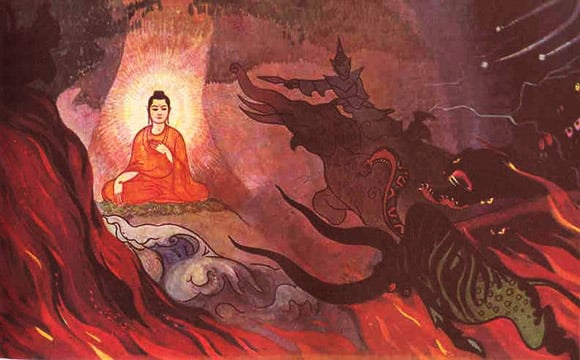
We often say there is no “Satan” in Buddhism. While this is true, Mara is his nasty equal, although he is generally thought of as the demons of our attachments and addictions. But, is Satan any different? The mission in Buddhism is to end suffering and Samsara, and one of the methods is to remove our addictions and attachments, greed and anger. Demons are nothing more than the manifestation of those things we battle in life.
So, is there an adversary? Yes, in a dualistic, conventional world, there are adversaries and obstacles. We tend not to embody these “enemies” as separate beings, and think of them as our own ego-driven attachments and addictions given form. The Eightfold Path in Buddhism is the remedy for these demons.
Seeking the light — light as comfort or weapon
What do you do if you come face to face with a real-life monster or ghost? The most effective way to battle our demons is the Dharma and the Eightfold Path and Refuge in Buddha, Dharma and Sangha. Still, if you find yourself face-to-face with a hungry ghost this Halloween, mantras are the go-to. Recitation of sutras not only protects you, but it can be beneficial to the suffering evil entity. The light of a Buddha image — to their “demon eyes” an irresistable explosion of beautiful light — cannot be resisted by any Demon.
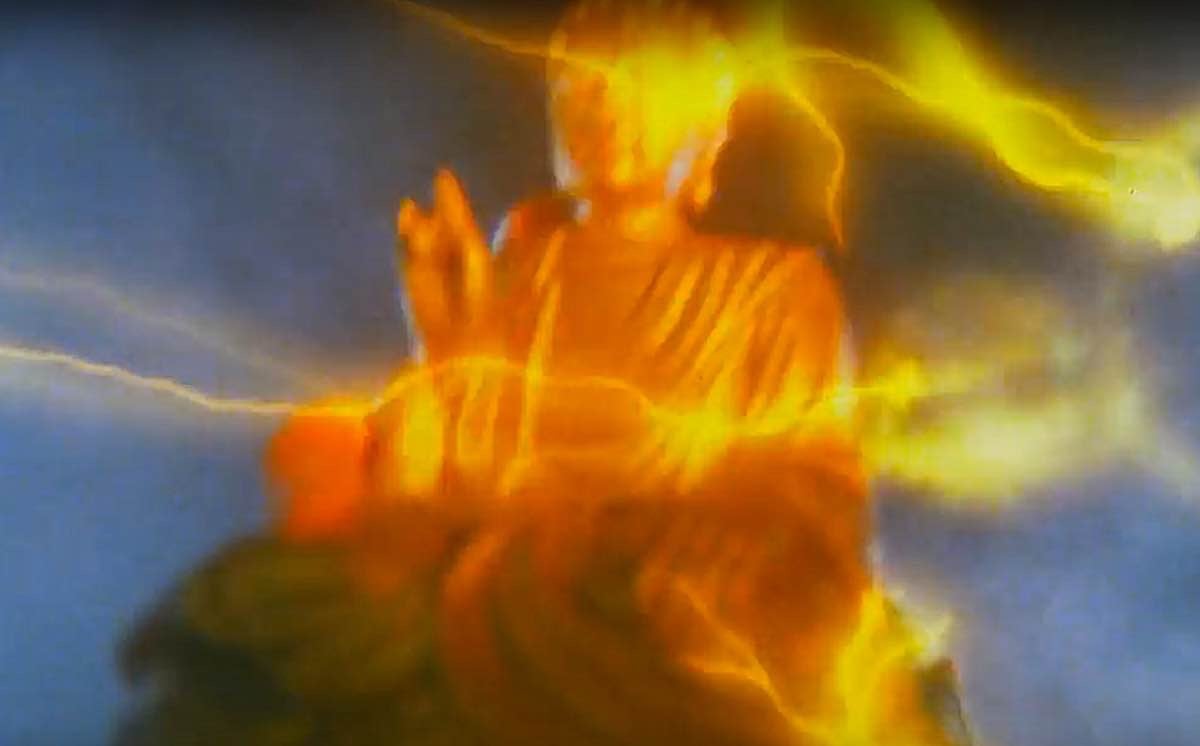
Aha, you say, but what if the evil spirit isn’t Buddhist? In most cultures, salt repels evil spirits. Aside from salt, “light” is universal protection against evil. Whether it’s the sanctuary of “dawn” when ghosts and vampires and other “night creatures” withdraw, or a brightly lit home or city, we feel comforted in the light. Denizens of evil tend to haunt the shadows. Even in the daytime, in many parts of the world, the shadows of a cave or deep darkness in a forest are considered “Yin” and ghostly.
In Buddhism, the first offering in spiritual practice is “light” — butter lamps, candles, or, in modern times, strings of neon lighting.
Also, near universal as remedies are repeated phrases — in Buddhism, mantras or sutras, in other traditions, repeated prayers or chants. We seek refuge in Buddha, Dharma and Sangha — but when we are terrified of what lurks in the dark, we seek refuge in the solace of light.
Light offerings to the Three Jewels in Buddhism are a daily ritual for many. The power of light is a universal constant that links us back to our prehistory past when the darkness in the forest brought the predators and monsters. It would be so easy to visualize a “werewolf” in the dark of a forest. Firelight, and later lamplight and electric light, became barriers to evil — as in darkness.
The nasties of the dark side
So, who are these nasties of the dark in Buddhism? Let’s start with the smallest, impish the’ u-rang — goblins; we’ll make sure to cover the zombies and end on the giants.

The’ u-rang — the “stormy” imps
Think of the the’ u-rang as little goblins — with enough punch to create thunderstorms:
“The the’ u-rang are impish miniature goblins. Although most Tibetans do not regard them as ghosts, Tsumbas say they are the ghosts of dead children,” according to the book Karma, an Anthropological Inquiry (page 249). Like other “ghosts” they manifest from unfulfilled karma, in this case children who did not live a full life. For this reason, they are often harmless, but being immature, if offended, can become very dangerous.
The more dangerous The’ u-rang are “malevolent spirits that cause destructive thunderstorms and impregnate women. Debrong Pano, one type of the’ urang, has nine heads, 18 arms and 1000 eyes.” [1]
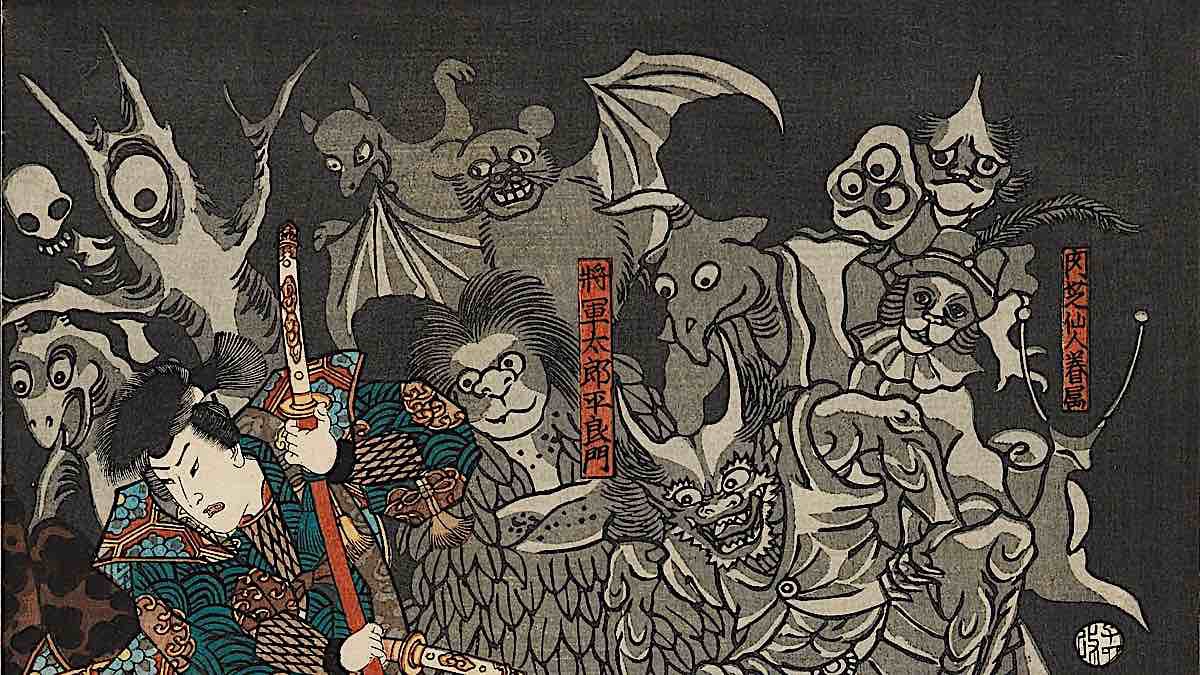
Rolangs, Delogs and other zombies
Rolangs are similar to the zombies of movie-lore. “Ro” literally means corpse” and “langs” means to rise up. Literally, the Risen Dead. “After a person dies, if the spirit of a human is unable to move on, the corpse moans, then tries to sit up. Eventually, it succeeds, then starts muttering to itself, then becomes strong enough to stand up and move about.” [1] To prevent the dead from rising, some monks perform phowa on behalf of the corpse, helping the spirit leave the body. [For a feature on phowa or powa, see>> ]
Delogs are another form of “zombies,” except their bodies typically stay in the human realm while their “spirit” is tormented in hell. Sometimes, as in the case of Dawa Drolma (from Journey to the Realms Beyond Death) they return to tell the tale. [2]
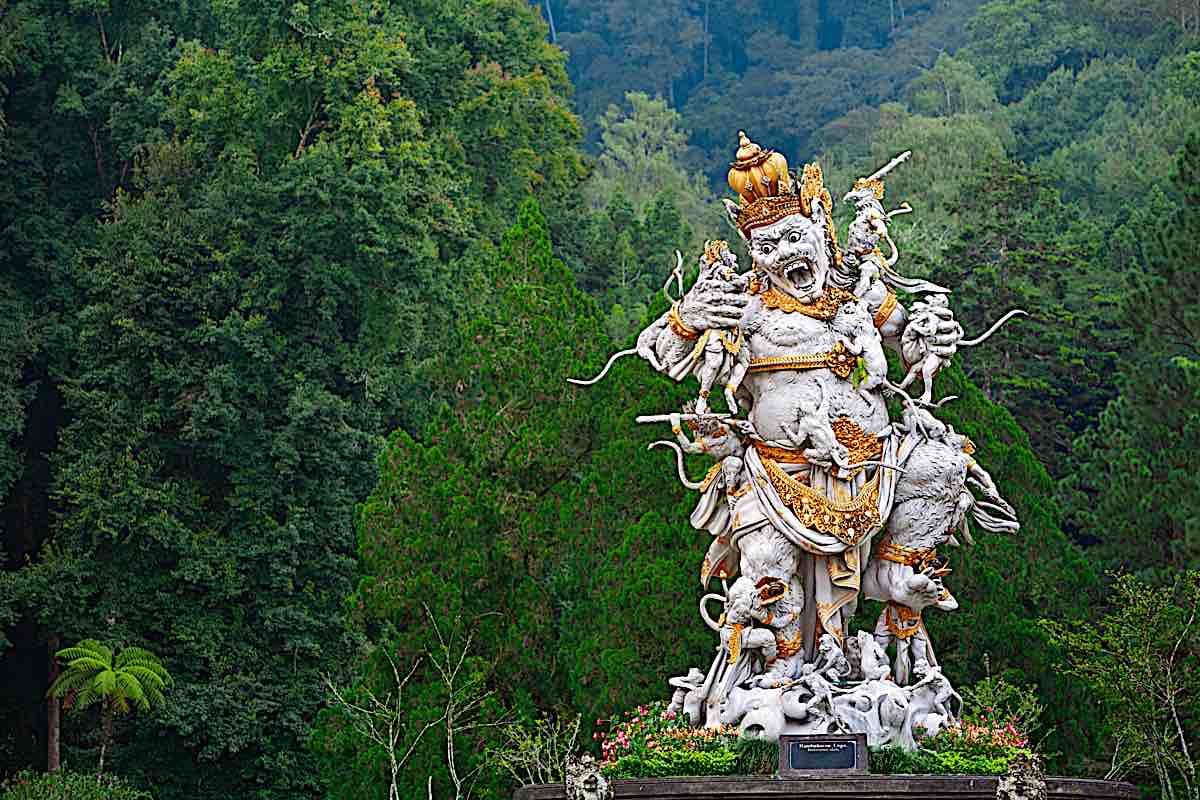
Rakshasa — demon man-eaters
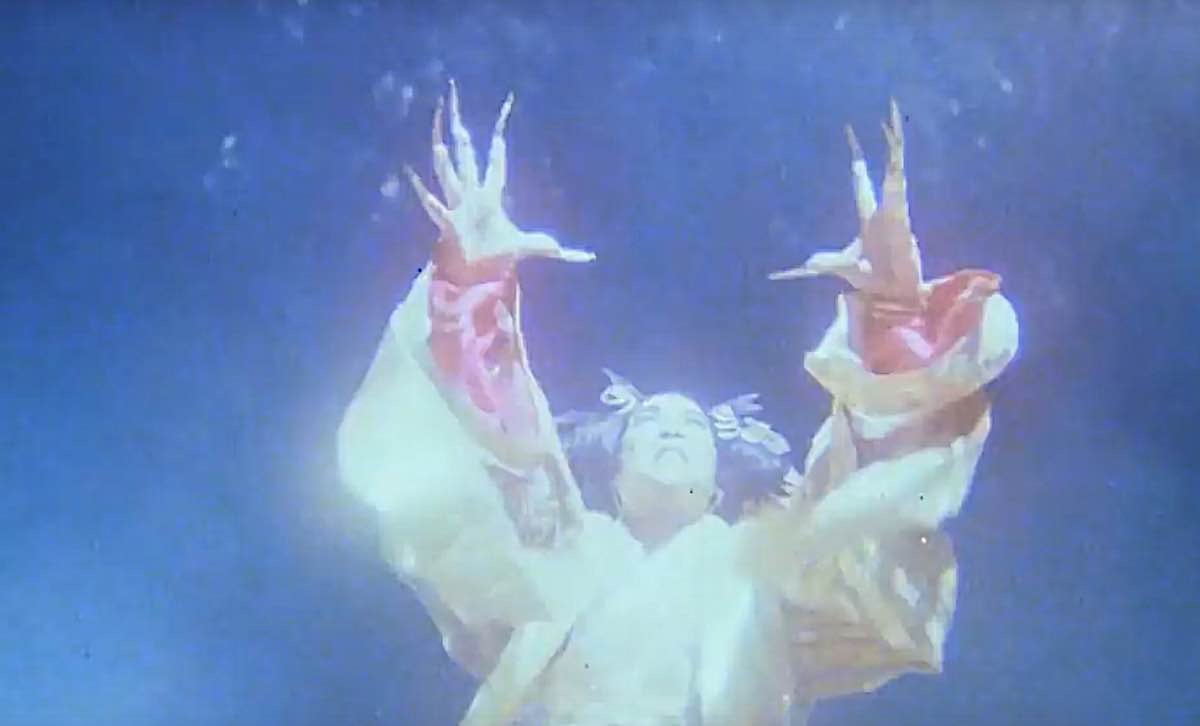
Think of them as super-powered zombies who can shape-shift and have a higher IQ than most people. They are not always evil, so this one is tricky. Still, they’re super clever and crafty — unlike the brainless western movie zombies. In the great epics, Rakshasas were heros as well as evil. When in “human-ish” form can appear to have two giant tusks and rows of teeth that would dwarf a great-white shark. They also know black magic, have supernatural powers, sharp fangs, and even wings. And, unlike zombies, super-powered Rakshasas have been known to feast on gods, deities or other demons. Think of them as zombies with superpowers.
Belu and Shapeshifters
Like many areas of the world, some demons can be humanoid but shapeshifters. Pan-kike are not only shapeshifters, they sport fangs and eat human flesh. There are nice Belu as well in the “shape” of panswe belu, who are “vegetarian” and munch on flowers instead of people. Yum.
Pretas — Hungry Ghosts
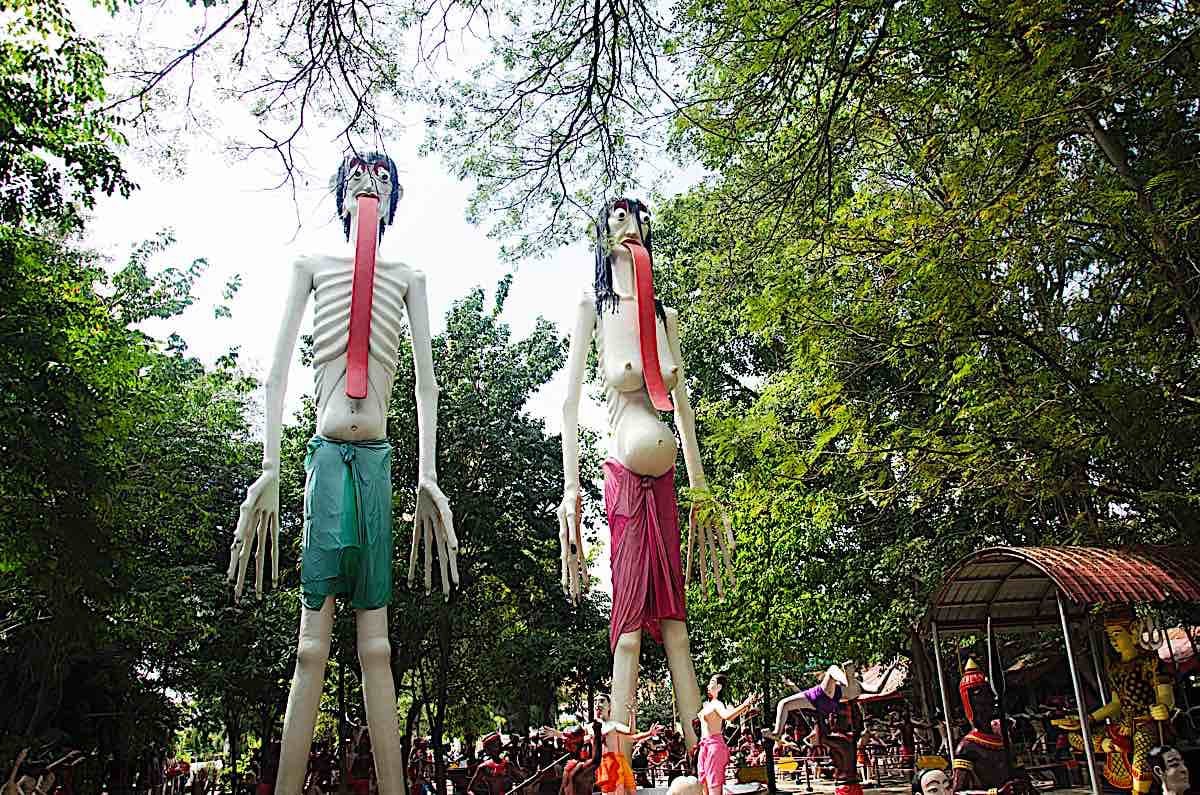
This is, perhaps, the best known of the Buddhist ghosts — either a karmic metaphor or a horrible realm of suffering beings, depending on your view. Based on our karma, our greed can be the cause to be reborn as a hungry ghost. This is a miserable existence, and there are many Buddhist practices designed to relieve the suffering of these wretched creatures.
They have bloated stomachs and tiny mouths and throats that cannot swallow. They are always hungry and thirsty to the point of absolute madness. They are compulsive and addicted to greedy behaviours that can cause great suffering in the human and animal realms.
Jikininki — man-eating hungry ghosts
Unlike “regular” pretas who can be a “nuisance” the Japanese version, the Jikininki are not as cute as they sound. Their name translates to “people-eating ghosts” — super zombies with ghostly powers but a ravenous appetite for yummy humans. They look pretty disgusting, too, black and bloated.
Oni — Only worse than ogres

If you thought ogres and trolls were terrible, the Oni dwarf them in size, and they enjoy violence. Everything about these giants is over-the-top. If you’re lucky enough to cut off one of their limbs — a feat of a samurai — it will just instantly grow back. They carry kanabo clubs (spiked clubs). They not only enjoy violence, they can send plague, disease and insanity your way, so you’d be glad of a regular troll versus the human-flesh-eating Oni. To banish one of these giants, a local army of samurais won’t do; call a monk instead and have your mantras at the ready.
Narakas and Hell-Beings
Hell-beings are supposed to live in their own realm, swept there by their lives of negative karmas, but they can crave our world and plague humans. Like “western” demons, they are filled with hate, aggression and anger without reason.
Again, karma is the force that creates these beings. In our lives, if we act with hatred, we may have to spend some time as “hell-beings” until we burn off these karmic debts. Like the western hells, it’s hot down there — so it is no wonder the Narakas seek out our colder world. The hell realms make Dante’s hells look like a picnic, with every type of torture imaginable. No matter how many times they are tortured and killed, these unfortunate beings are instantly brought back to hell-life. Eventually, the torment will end, and these poor beings will be born into better lives.
Of course, hell-beings often escape and plague our world.
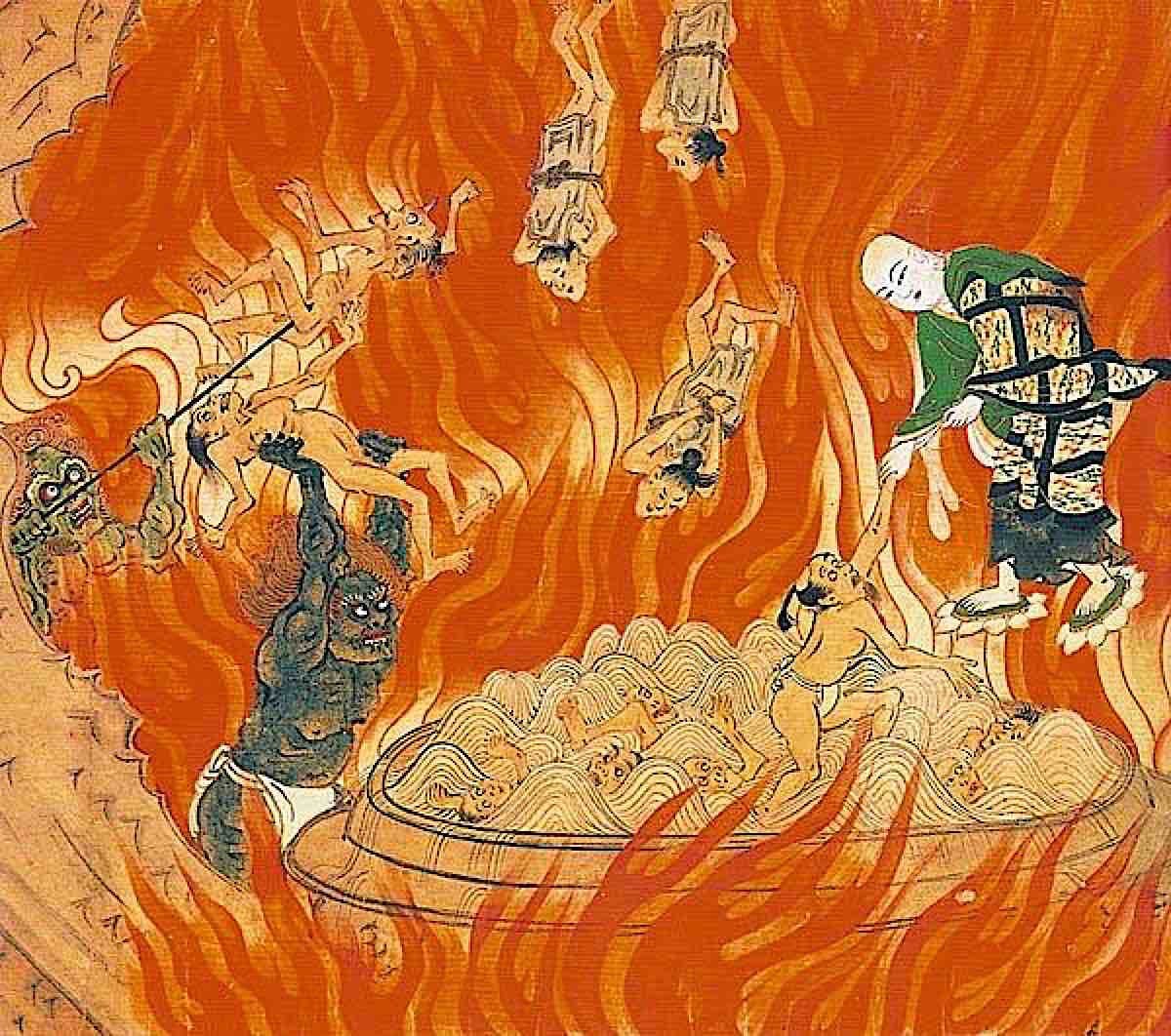
Call in the exorcist? Or Ksitigarbha

In Buddhism, as in other spiritual paths, there are forms of exorcism — although not to destroy. Typically, the Buddhist exorcism is designed to help relieve them of their suffering and karmic debt. Through the offering of goodwill, love, mantras, prayers of purification, the spirit’s suffering is relieved. There is no thought of destruction of demons in the Buddhist concept of exorcism.
Famously, the Bodhisattva Ksitigarbha — the “wanderer in the six realms” or the “wanderer with the staff” — is one of the eight “heart sons” of Shakyamuni Buddha. Because of his vow — to “liberate all beings” — he is the one who can rescue sufferers from the hells. The legend began with Ksitigarbha’s heroic Bodhisattva rescue of his mother from the hell realms. Of course, in Buddhism, we say, “all beings are our mothers” — which expands the symbolism of this story considerably.
In the absence of an exorcist, Ksitigarbha’s mantra is effective — His compassion is boundless:
Om Ksitigarbha T-haleng Hum
(Pronounced K-shiti-gar-bah T-ha-leng hung; t-haleng is not prounced th as is thus.)
In Japan, the Ksitigarbha mantra is:
Namaḥ samantabuddhānāṃ, ha ha ha, sutanu svāhā
Chinese Buddhists, as with other Buddhas, recite the name mantra:
Námó dìzàng wáng púsà 南無地藏王菩萨
Korean Buddhists recite:
Namo jijang bonsai

Non-violent exorcisms

The “weapons” of demon-fighters in Buddhism tend to be non-lethal. Monks whirl mala beads. A spoken mantra. Sutras. Prayer Wheels are very effective, as they combine thousands of mantras — with a sweeping circular action. Even the sight of a sutra text will send any demon flying — no plunging of stakes into hearts or pea soup inducing exorcisms.
Under no circumstances is destruction or killing of beings, even demons, condoned. The goal is to purify their karma and help them move on to a more fortunate rebirth — killing two birds with one stone, so to speak. They’ll stop bothering you, and you’ll help them find happiness.
All joking aside, there is never a circumstance where a sincerely chanted mantra isn’t beneficial. Did you wake up from an evil dream. Chant your favourite mantra. You will feel calm right away. Feel haunted? Mantra. Are you facing a bad-ass Rakshasa? Well, run, while chanting mantras. Hungry ghost? Feed it a mantra.
The most universally helpful protective mantras for anyone (no empowerment needed) is probably the action hero of the Buddhas, Green Tara:
Om Tare Tuttare Ture Soha
Or, try the Ksitigarbha mantra (above) or show your compassion for these suffering beings with Chenrezig or Avalokiteshvara’s mantra:
Om Mani Padme Hum.
NOTES
[1] Graveyard Shift
[2] Tricycle
5 thoughts on “Exploring the World of Monsters and Demons in Buddhism; Scary Fun with Our Darker Natures”
Leave a Comment
More articles by this author
Search
Latest Features
Please support the "Spread the Dharma" mission as one of our heroic Dharma Supporting Members, or with a one-time donation.
Please Help Support the “Spread the Dharma” Mission!

Be a part of the noble mission as a supporting member or a patron, or a volunteer contributor of content.
The power of Dharma to help sentient beings, in part, lies in ensuring access to Buddha’s precious Dharma — the mission of Buddha Weekly. We can’t do it without you!
A non-profit association since 2007, Buddha Weekly published many feature articles, videos, and, podcasts. Please consider supporting the mission to preserve and “Spread the Dharma." Your support as either a patron or a supporting member helps defray the high costs of producing quality Dharma content. Thank you! Learn more here, or become one of our super karma heroes on Patreon.
Lee Kane
Author | Buddha Weekly
Lee Kane is the editor of Buddha Weekly, since 2007. His main focuses as a writer are mindfulness techniques, meditation, Dharma and Sutra commentaries, Buddhist practices, international perspectives and traditions, Vajrayana, Mahayana, Zen. He also covers various events.
Lee also contributes as a writer to various other online magazines and blogs.






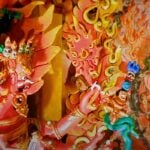


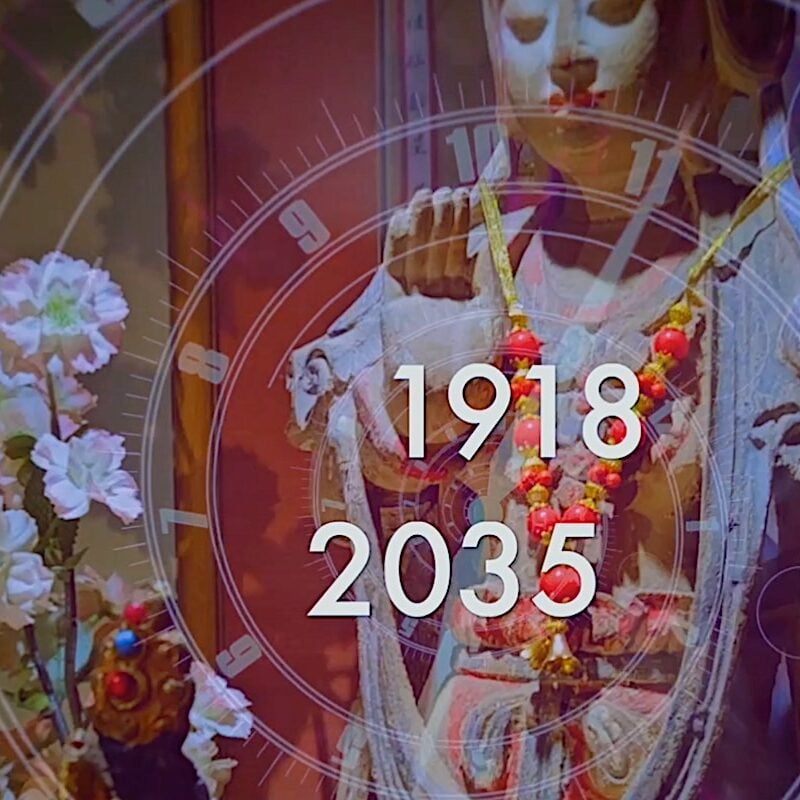
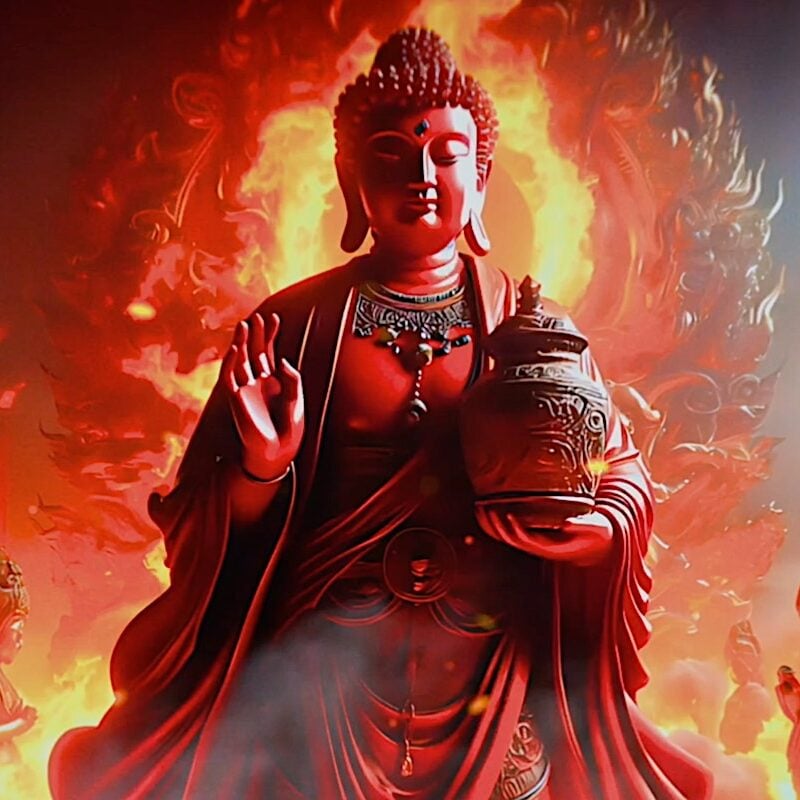
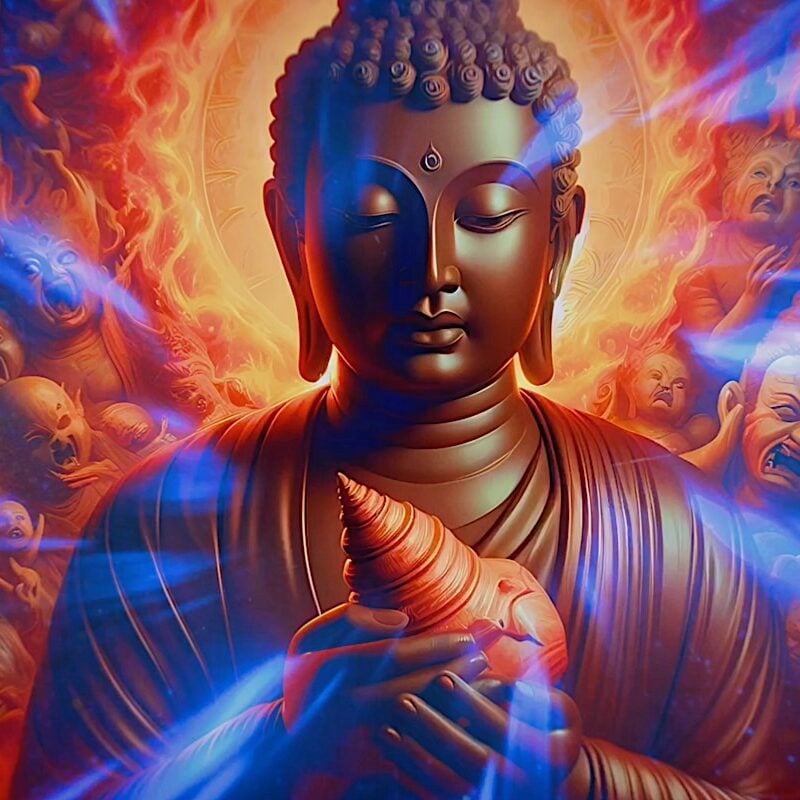
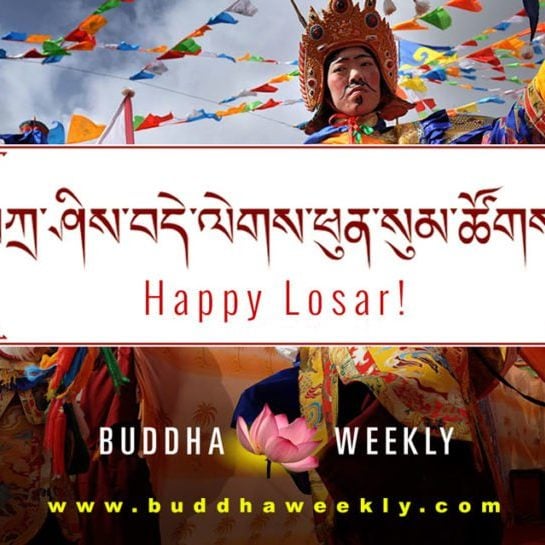






This was a delightful after-dark Halloween-themed read! A wonderful summary of the who’s who in Buddhist lore, and brilliant illustrations to go along with it. Five stars!
Thank you. Happy Halloween!
It’s amazing. Other zombie who can be a potential rival for the actual ghoul is the gashadokuro and the Onryo.
The supernatural zombie species were abandoned time ago, remplaced by the viral demons. A few people can listen the legends abuth revenants, draugars, nuppeppos, langsuirs, pontianaks, anchimallens, and similar beings.
Thanks. As a fan of both horror themes and Asian culture(s) I enjoyed much this article.
I translated it to Spanish (by hand, not using the “Translate” button) and posted into a RPG forum, both citing the original source and keeping linkts. I hope you don’t mind.